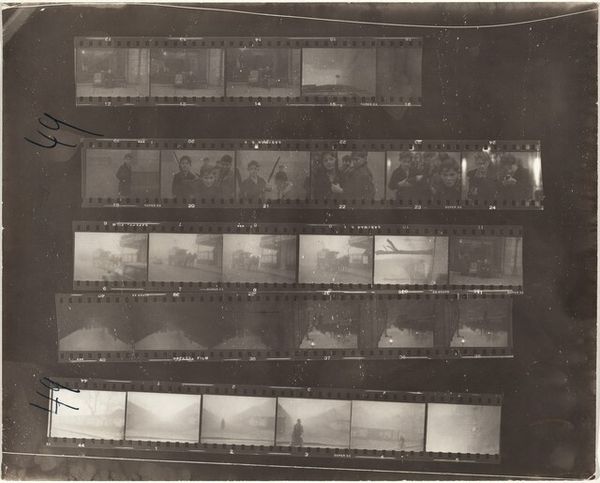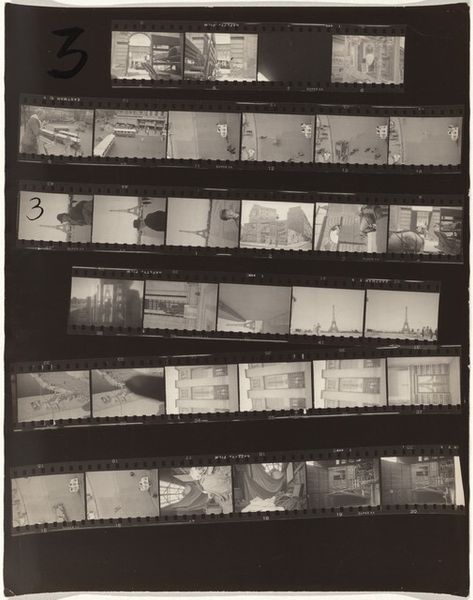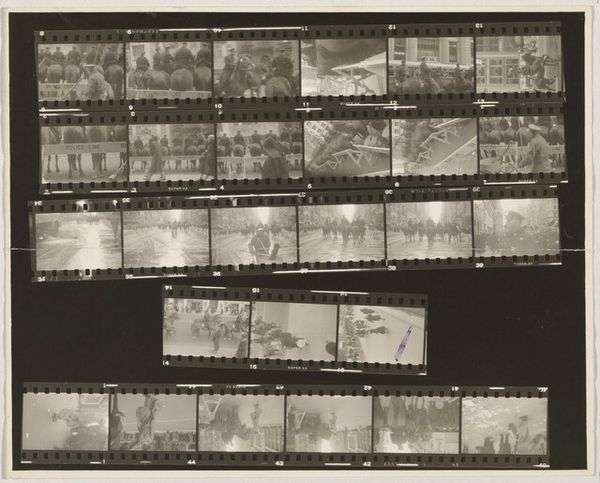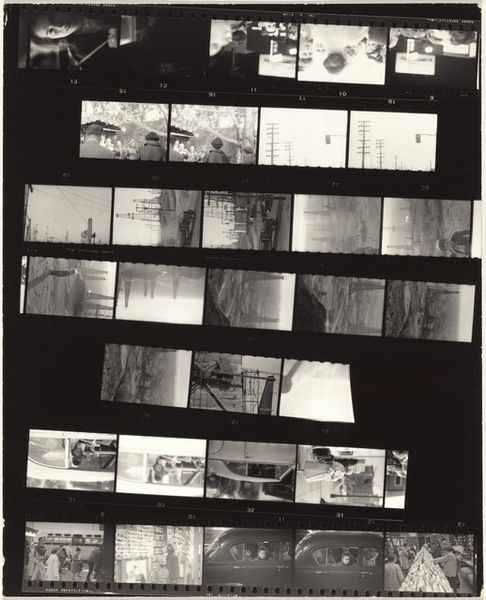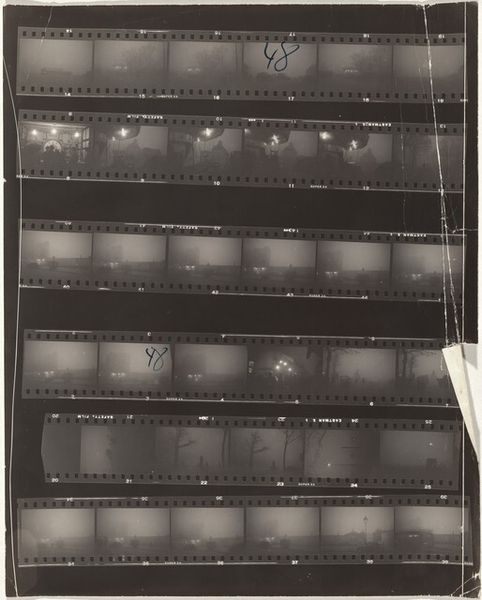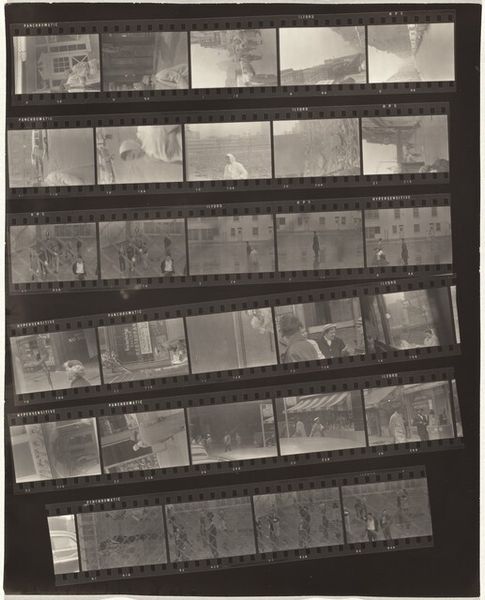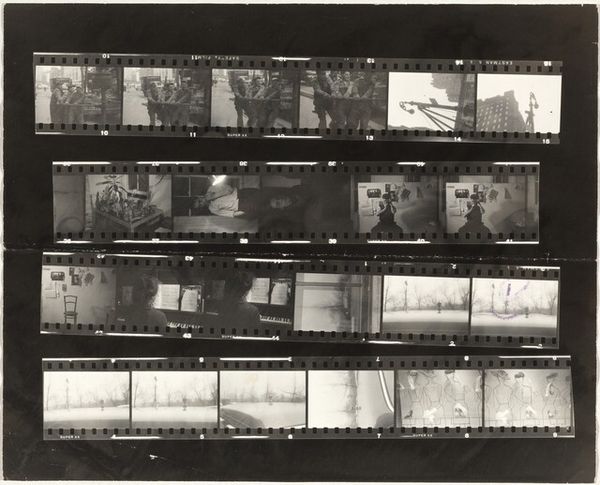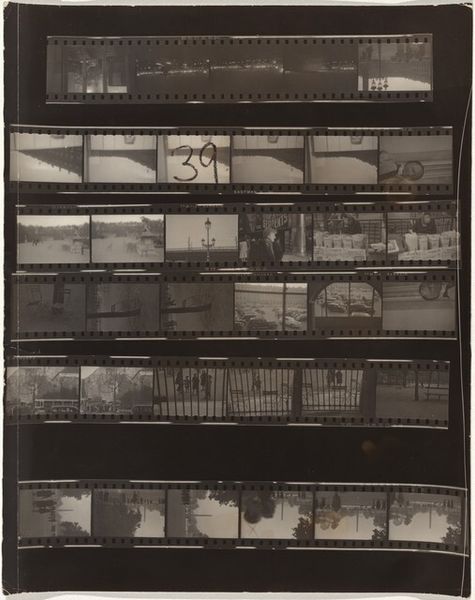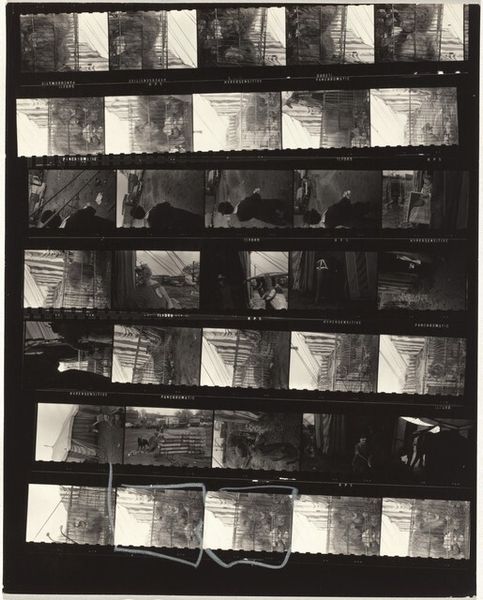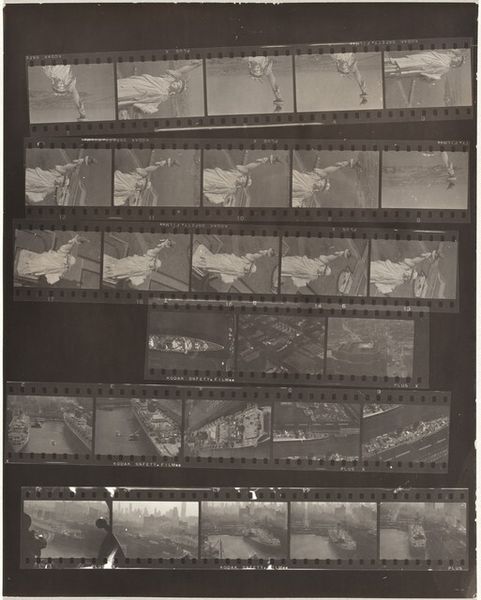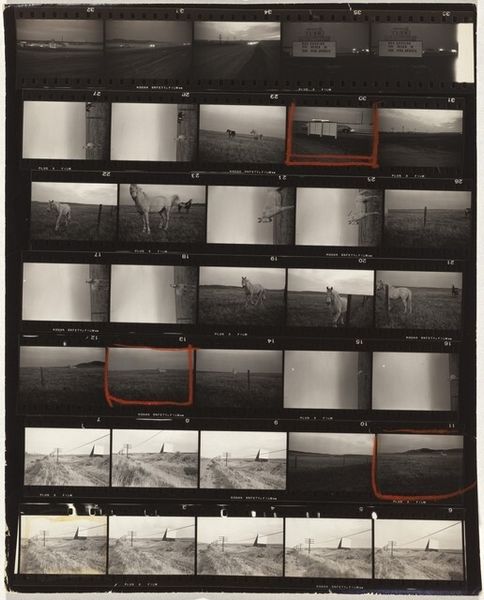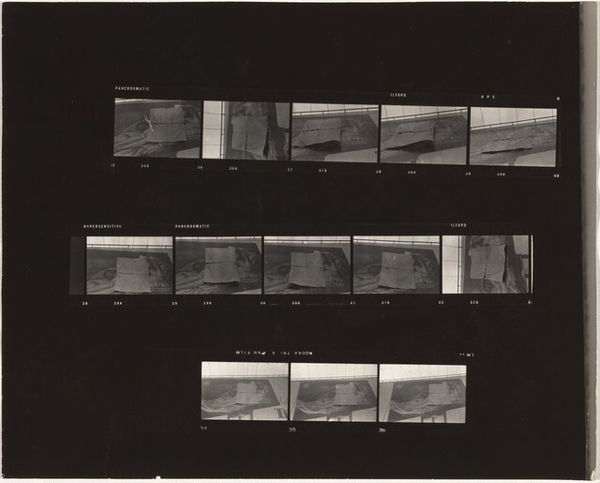
contact-print, photography
#
landscape
#
contact-print
#
archive photography
#
street-photography
#
photography
#
modernism
Dimensions: overall: 29.9 x 23.9 cm (11 3/4 x 9 7/16 in.)
Copyright: National Gallery of Art: CC0 1.0
Curator: Here we have Robert Frank's "Paris 47A," created between 1949 and 1950. What strikes you immediately about this contact print? Editor: The grittiness, definitely. It’s all about process. You see the marks, the imperfections, it makes the images more immediate somehow, less polished. It doesn’t try to hide its nature. Curator: Frank’s work, particularly in the post-war era, often pushed against the romanticized views of places like Paris. Instead, he documents the everyday, the raw textures of the city. Editor: Absolutely. And looking at the medium itself - a contact print – it screams process. You can see the full sequence, every shot he considered. It demystifies the photographic act, shows the work that goes into even fleeting images. The film edges emphasize the commercial element, of photographic materials, while hinting at possible editing choices and image sequencing as integral parts of its meaning. Curator: The format almost echoes the way archives organize and display their findings. It begs the question of which photographs "make the cut," and, furthermore, how this final selection becomes the historical narrative of Frank’s practice. The repetition across the frames gives a kind of rhythm, doesn't it? Editor: Yes! A labor rhythm. It connects the high-art presentation to the physical act of photography – developing, printing. It isn't about the grand narrative but about repetitive labor, and by extension it's about accessibility, about showing photography as something made, something worked at. Curator: This piece also anticipates Frank’s later, more famous work, "The Americans," both in subject and tone. It's the quiet observation of life. It’s the reality without romanticizing it. Editor: And for me, seeing that labor, seeing the work that has to go in. That the raw materials are elevated and placed center-stage to remind me that any artist – a photographer in this case – starts with some pretty mundane components: the camera, the materials, but also that they need something like opportunity and luck in the equation. Curator: Considering Frank's other pieces, I think it makes me appreciate seeing his progression in style. We’re capturing that raw emotion as part of an historical era through different cultural contexts. Editor: I see in "Paris 47A" the essence of Robert Frank as someone who exposed photography, stripping it bare in order to humanize his images of the city and its making.
Comments
No comments
Be the first to comment and join the conversation on the ultimate creative platform.
